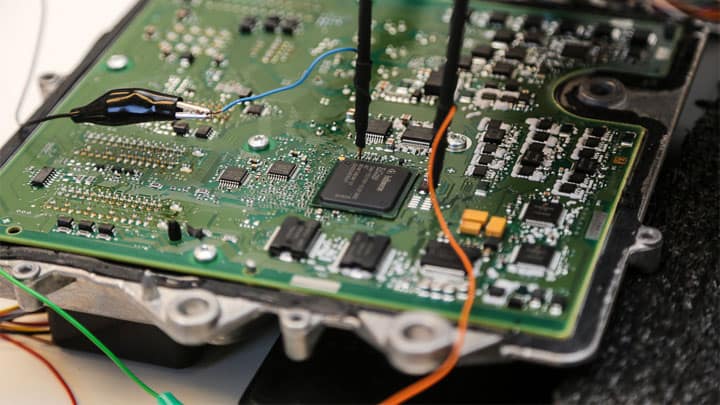The ECU is a small computer that manages engine performance using sensors. It controls all functions within the engine, including braking power, ignition timing, the air/fuel mixture and wheel speed.
How does an ECU work?
Sensors throughout the car engine feed into the ECU, which processes the information they provide. It makes millions of calculations every second, comparing the data to performance maps, which outline the ideal operating conditions for the vehicle.
The ECU processes readings provided by the sensors and makes adjustments accordingly. For example, as you are driving, it can detect whether the engine is running too lean (not enough fuel) or too rich (too much fuel) and adjust the balance in a split second to improve efficiency.
If the ECU detects a problem, it will make the driver aware by switching on a warning light.
Where is the ECU located?
The location of the ECU varies between different makes and models; there’s no industry standard. It will be near the engine – often in the engine bay or the front of the interior (e.g. in the glove box). Your vehicle handbook should provide information about where to find it.
Different types of ECUs
Each car has an ECU designed, calibrated and mapped precisely for its engine. They aren’t interchangeable; the optimal parameters for one car might make another extremely inefficient and, more likely, won’t work.
The ECU pictured below is for a car with an automatic transmission.

If you have to replace your ECU, you should always use an Original Equipment Manufacturer (OEM) part.
What is ECU remapping?
ECU remapping involves overwriting the existing performance and software maps with new ones to alter the car’s behavior. Remapping – sometimes called chipping or chip tuning – is an aftermarket modification popular with drivers who want extra performance from their engines.
